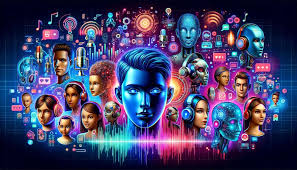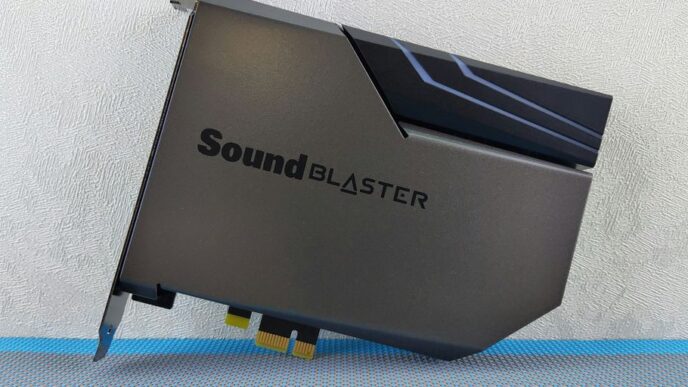Introduction
In today’s rapidly evolving technological landscape, Artificial Intelligence (AI) is playing a central role in how humans interact with machines. One of the most fascinating applications of AI is in the development of “Character AI,” which refers to AI-powered digital personalities designed to engage with users in human-like ways. Combined with voice interaction technology, these digital personalities can make communication with machines feel more natural and intuitive.
This article will explore the relationship between Character AI and voice interaction, delving into their individual functionalities, their intersection, and the future potential of this dynamic duo.
What is Character AI?
Defining Character AI
Character AI refers to AI systems that simulate a human-like personality or character. Unlike traditional AI, which often focuses on solving specific tasks or providing responses based on logic, Character AI is designed to simulate a more dynamic and conversational interaction. These AI characters can take on various roles, from virtual assistants to interactive characters in video games and customer service bots.
How Does Character AI Work?
Character AI is powered by machine learning models, natural language processing (NLP), and neural networks. These technologies allow the AI to “learn” from interactions, improving over time and providing more personalized responses. Unlike rule-based systems that follow a fixed set of instructions, Character AI adapts to the nuances of human conversation, giving it a more organic feel.
Examples of Character AI
Some popular examples of Character AI include virtual assistants like Siri, Alexa, and Google Assistant, as well as more advanced interactive characters like those seen in video games (e.g., NPCs in role-playing games) and interactive movie experiences.
What is Voice Interaction?
Defining Voice Interaction
Voice interaction refers to the use of spoken language as an interface to interact with machines. Voice assistants, voice-activated devices, and speech recognition systems are all examples of voice interaction technologies that enable users to control and communicate with technology through speech.
The Technology Behind Voice Interaction
Voice interaction systems rely on advanced speech recognition software, which converts spoken language into text. This is followed by natural language processing (NLP) algorithms that interpret the meaning of the speech. Once the speech is understood, the system generates a response, often using text-to-speech (TTS) technology to communicate back in a voice that sounds natural.
Examples of Voice Interaction
Some common examples include smart home devices like Amazon Echo and Google Home, voice-controlled apps on smartphones, and even AI-powered call centers.
The Connection Between Character AI and Voice Interaction
Bringing Characters to Life with Voice
The combination of Character AI and voice interaction represents a significant leap forward in creating truly engaging and lifelike digital characters. Voice interaction allows these characters to “speak” with users in a way that feels personal and real. Without voice interaction, character AI would only be able to communicate through text, which would limit the emotional depth and immediacy of the interaction. Soon after your spoken words transform into text, NLP helps you to understand and interpret their meaning using text to speech AI.
Enhancing User Experience
When Character AI is combined with voice interaction, the user experience is significantly enhanced. Voice allows for more natural and intuitive communication. For instance, a virtual character powered by AI can have a conversation with you, ask questions, and respond with emotions or personality traits that make it feel like you’re interacting with a real person.
The Role of Emotion and Intonation
Voice interaction is not just about converting speech into text but also about conveying emotions through tone, pitch, and rhythm. A character AI with a voice that can express excitement, sadness, or even sarcasm creates a more immersive and engaging experience. This emotional layer allows for more authentic interactions.
Applications of Character AI and Voice Interaction
Virtual Assistants
One of the most well-known applications of character AI and voice interaction is in virtual assistants like Siri, Alexa, and Google Assistant. These assistants use character AI to understand commands and provide responses, while voice interaction makes communication smooth and natural.
Entertainment and Gaming
In the world of entertainment, voice-interactive AI is being used to create characters that can converse with players in real-time. Video games, VR experiences, and even interactive movies are increasingly integrating Character AI with voice interaction to deliver a richer, more engaging experience.
Customer Service
AI-powered voice agents are transforming the customer service industry. Many companies now use voice interaction systems to handle customer inquiries, with AI characters trained to respond to a wide range of customer needs. These characters are designed to sound friendly, empathetic, and professional, offering a seamless interaction that mimics human service.
Healthcare
In healthcare, voice interaction combined with character AI is being used to assist patients, especially the elderly or those with disabilities. These AI characters can provide medical information, remind patients to take medication, or even engage in conversations to combat loneliness.
Challenges in Integrating Character AI with Voice Interaction
Speech Recognition Limitations
One of the biggest challenges in voice interaction is ensuring that speech recognition systems can accurately understand different accents, dialects, and speech patterns. Misunderstandings can cause frustration and reduce the effectiveness of the AI.
Emotional Understanding
While voice can convey emotions, teaching Character AI to truly understand and react to emotions in a human-like way is still a difficult task. AI can simulate empathy, but genuine emotional intelligence remains a challenge.
Naturalness and Fluency
Character AI needs to sound fluid and natural, avoiding robotic or awkward-sounding interactions. Ensuring that the AI doesn’t sound too “scripted” or limited requires continuous refinement and training.
The Future of Character AI and Voice Interaction
Improving Emotional Intelligence
As technology progresses, the next frontier for Character AI and voice interaction is improving emotional intelligence. AI systems may become more adept at recognizing emotional cues from speech, such as tone and cadence, allowing them to respond in ways that feel more genuine and empathetic.
Advanced Personalization
In the future, we may see even more personalized interactions with AI characters. By learning from a user’s preferences, voice interaction systems could tailor responses based on the user’s history, emotional state, and context.
Expanding Applications
We will likely see the growth of AI characters in industries beyond customer service and entertainment. Areas like education, mental health, and personal coaching could benefit from the integration of character AI and voice interaction to provide more effective, engaging services.
Ethical Considerations
As character AI and voice interaction technologies evolve, ethical questions around privacy, consent, and manipulation will become increasingly important. Safeguards will need to be put in place to protect users and ensure that AI characters are used responsibly.
Conclusion
The combination of Character AI and voice interaction is shaping the future of human-computer interaction. This technology makes it possible for machines to engage with users in a way that feels natural, personal, and even emotional. While there are challenges to overcome, including speech recognition limitations and emotional understanding, the potential for these technologies to revolutionize industries like entertainment, healthcare, customer service, and beyond is immense.
As we look toward the future, the continued evolution of Character AI and voice interaction will likely bring about even more seamless and immersive experiences. Whether it’s for a virtual assistant, a character in a game, or a companion in healthcare, the collaboration of AI and voice interaction is one of the most exciting advancements in the tech world today.













